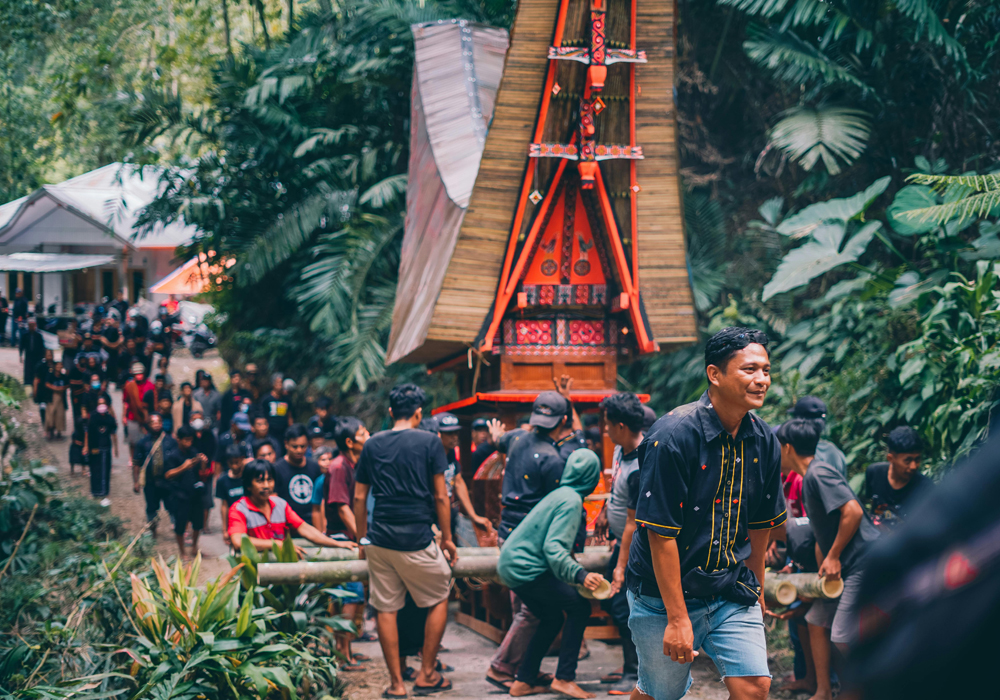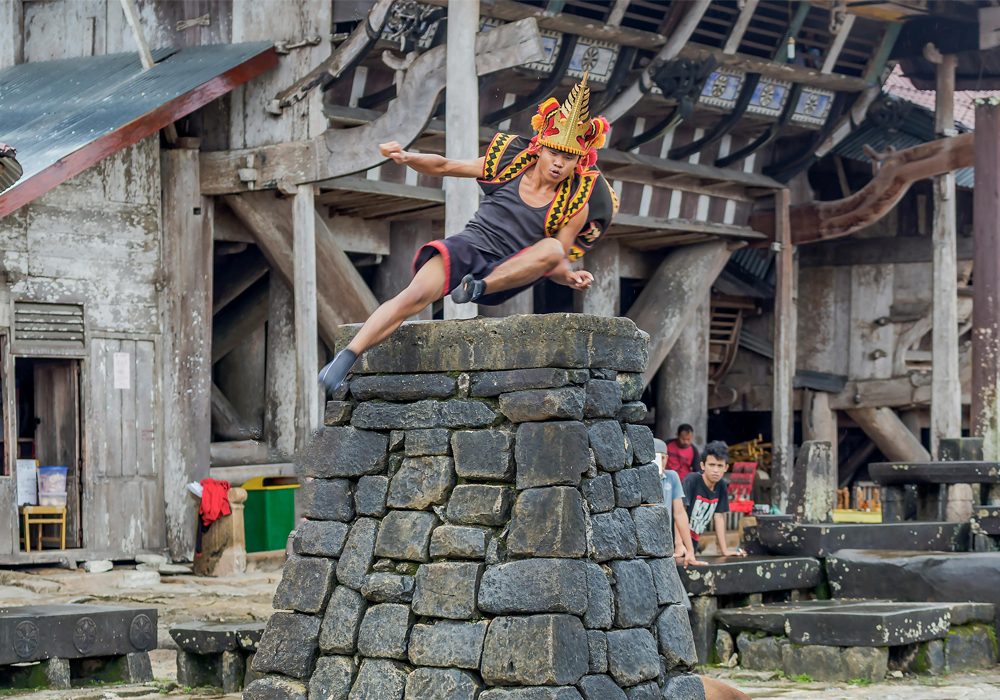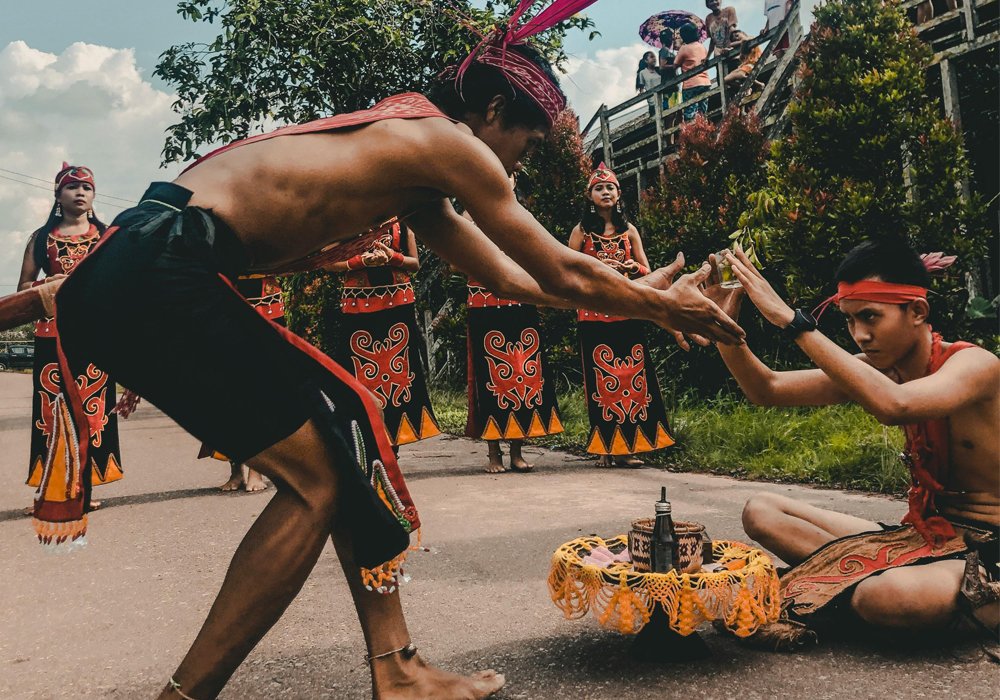7 “Extreme” Indonesian Cultures That Will Make You Go “Huh?!” Ah, Indonesia! The land of a thousand islands, vibrant sarongs, delicious satay, and… well, some truly mind-bending cultural practices that would make a Westerner clutch their pearls and wonder if they’d accidentally stumbled onto a set for a particularly avant-garde horror film.
Forget your basic “don’t point with your feet” etiquette – we’re diving headfirst into the deep end of Indonesian “extremeness” where the line between life and death is blurrier than a Jakarta sidewalk after a monsoon.
Let’s be honest, from a Western vantage point, where funerals are generally somber, private affairs and talking to a dead relative involves a séance hotline, some Indonesian traditions are less “cultural difference” and more “wait, what now?!” But fear not, intrepid traveler!
What might seem extreme to us is simply… Tuesday in these parts. And honestly, once you peel back the layers of initial shock, you’ll find a profound beauty, a deep respect, and perhaps even a chuckle or two at how wildly different humanity can be.
1. The Living Dead (Literally): Your Houseguest from Beyond the Grave in Tana Toraja
Imagine this: your beloved Aunt Mildred passes away. You’re sad, you hold a funeral, you bury her. End of story, right? WRONG. If you’re in Tana Toraja, Sulawesi, Aunt Mildred’s journey has only just begun.
When someone “dies” here, they’re not actually dead. Oh no, they’re just “sick.” And by “sick,” they mean they’re embalmed, given a nice outfit, and kept in the house – sometimes for years.

Yes, you read that right. Years! The family will still feed them, change their clothes, and even include them in daily conversations. “Honey, have you seen the remote? Oh, never mind, I found it next to Grandpa!”
The ultimate goal is to save enough money for a truly epic funeral ceremony called Rambu Solo, which can cost more than a small country’s GDP. This isn’t just a party; it’s a social Olympics involving hundreds of guests and dozens of sacrificed water buffalo.
The more buffalo, the higher the deceased’s status, and the quicker their spirit reaches the afterlife. So, next time you complain about funeral costs, just remember, at least you’re not financing a buffalo stampede.
2. The Great Bone Exhumation and Fashion Show: Ma’Nene
If the idea of living with a “sick” ancestor wasn’t enough, buckle up for Ma’Nene, also in Toraja. Every few years, families have a heartwarming (and slightly macabre) reunion. They exhume their ancestors from their coffins, give them a good cleaning, brush their hair, and dress them in brand new clothes. Think of it as extreme spring cleaning, but for your great-great-grandma.
The scene is truly something: rows of lovingly tended corpses, some of whom are then “walked” around the village by their living relatives. It’s a testament to the enduring bond between the living and the dead, a way to show continued love and respect.
For Westerners, it’s often a jaw-dropping spectacle that challenges every notion of how we interact with the departed. One can only imagine the family photo album.
3. Teeth Filing: The Ultimate Balinese Beauty Treatment (and Demon Repellent)
Feeling a little edgy? Thinking of a new look? In Bali, adolescents don’t just get braces; they get their teeth filed down. Yes, you heard correctly.
The Mapandes ritual involves filing down the canines and sometimes the incisors to create a more even line. Now, before you wince and call your dentist, this isn’t just for aesthetics. This is serious spiritual business.
The six filed teeth represent the “six human enemies”: lust, greed, anger, confusion, envy, and arrogance. By filing them down, Balinese youth symbolically shave off these negative traits, purifying themselves and marking their transition into adulthood.
It’s a literal way of getting your inner demons straightened out. So, next time you’re self-conscious about your crooked smile, just be grateful you’re not undergoing a spiritual dental makeover with a chisel.
4. Stone Jumping: The Original “Extreme Sports” for a Fiancee
On Nias Island, off the coast of Sumatra, young men don’t just propose with a ring; they prove their worth by literally leaping over a two-meter-high stone pillar. This isn’t some friendly parkour challenge; the pillar is often topped with a pointed stone, making Fahombo a genuinely dangerous feat.

This ancient tradition harks back to tribal warfare days, where a man’s ability to leap over enemy defenses was a crucial skill. Successfully jumping the stone proves courage, agility, and strength – essential qualities for a husband and protector.
Think of it as the world’s most intense pre-marital agility test. Forget meeting the parents; here, you have to defy gravity and potential impalement just to get a date.
5. The Tiwah Ceremony: A Second Funeral for the Bones
In Central Kalimantan, among the Dayak people, death isn’t a one-and-done deal. The Tiwah ceremony is a secondary funeral ritual that often takes place years after the initial burial. The purpose? To guide the deceased’s spirit to its final resting place in the upper world and ensure the prosperity of the living.

This elaborate ritual involves exhuming the bones of the deceased from their temporary grave, cleaning them, and then ritually cremating them. It’s a massive, multi-day affair filled with feasting, dancing, and sometimes even animal sacrifices.
For Westerners, the idea of digging up bones for another funeral might seem, shall we say, unconventional. But for the Dayak, it’s a profound act of love and spiritual necessity, ensuring the deceased finds peace and doesn’t wander as a restless spirit. Talk about commitment to your loved ones!
6. Kerokan: The Scraped Skin “Spa” Treatment
Feeling a bit under the weather? Got a headache or a cold? In Indonesia, you might be offered Kerokan, or “coin scraping.” No, it’s not a new cryptocurrency trend; it’s a traditional healing practice where a coin (or sometimes a piece of ginger) is vigorously scraped across your skin, usually your back, chest, or neck, after applying oil.
The goal is to release “bad wind” (angin) from the body. The result? Bright red, striped welts across your skin that look suspiciously like you’ve had a run-in with a very aggressive tiger. To Western eyes, it can look alarming, even like abuse.
But for millions of Indonesians, those angry red lines are a sign of relief, proof that the “bad wind” has been successfully expelled. It’s the ultimate “no pain, no gain” approach to a common cold.
7. Eating with Your Hands: The Ultimate Cutlery-Free Dining Experience
Okay, this might not be “extreme” in the same vein as talking to corpses, but for many Westerners conditioned to forks, knives, and the occasional spork, the idea of eating with bare hands can feel… barbaric? Unsanitary? A culinary challenge?
In many parts of Indonesia, especially with traditional dishes like nasi padang or pecel lele, eating with your hands is not just acceptable; it’s preferred! It’s believed to enhance the flavor and connection to the food.
The key is to use only your right hand (the left is traditionally considered unclean), and you’ll often be provided with an air kobokan – a bowl of water with a lemon slice – for rinsing your hands.
While it might take some practice to master the art of scooping rice and sambal without making a glorious mess, embracing this custom is a fantastic way to dive headfirst into Indonesian culture. Just try not to overthink the germ situation too much!
So, there you have it: a whirlwind tour of some of Indonesia’s most “extreme” cultural practices, seen through the slightly bewildered (and hopefully amused) eyes of a Westerner.
From intimate moments with preserved loved ones to ritualistic dental work and gravity-defying leaps, Indonesia consistently reminds us that what’s normal for some is extraordinary for others. And that, my friends, is truly the magic of travel.
